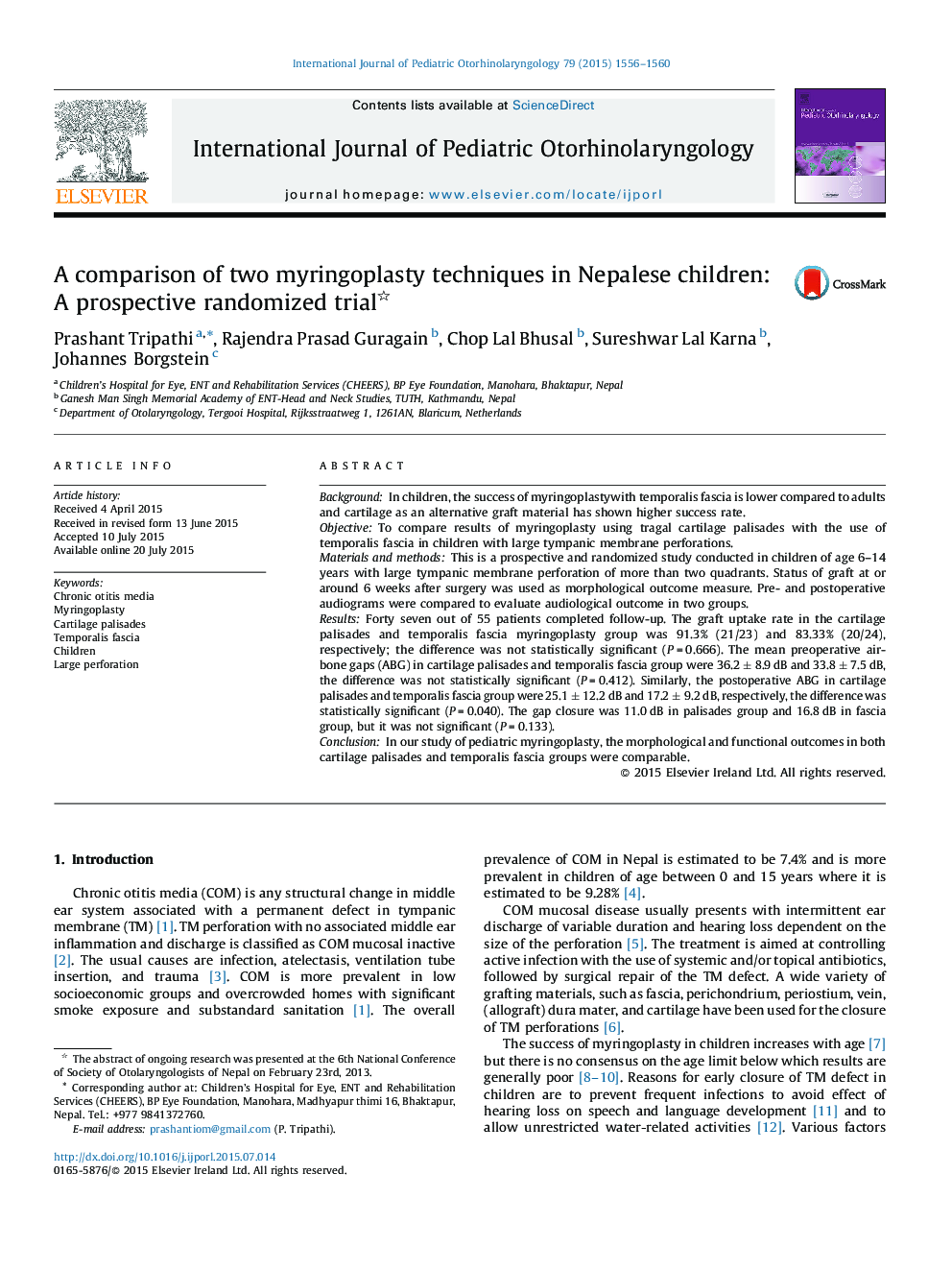| Article ID | Journal | Published Year | Pages | File Type |
|---|---|---|---|---|
| 4112106 | International Journal of Pediatric Otorhinolaryngology | 2015 | 5 Pages |
BackgroundIn children, the success of myringoplastywith temporalis fascia is lower compared to adults and cartilage as an alternative graft material has shown higher success rate.ObjectiveTo compare results of myringoplasty using tragal cartilage palisades with the use of temporalis fascia in children with large tympanic membrane perforations.Materials and methodsThis is a prospective and randomized study conducted in children of age 6–14 years with large tympanic membrane perforation of more than two quadrants. Status of graft at or around 6 weeks after surgery was used as morphological outcome measure. Pre- and postoperative audiograms were compared to evaluate audiological outcome in two groups.ResultsForty seven out of 55 patients completed follow-up. The graft uptake rate in the cartilage palisades and temporalis fascia myringoplasty group was 91.3% (21/23) and 83.33% (20/24), respectively; the difference was not statistically significant (P = 0.666). The mean preoperative air-bone gaps (ABG) in cartilage palisades and temporalis fascia group were 36.2 ± 8.9 dB and 33.8 ± 7.5 dB, the difference was not statistically significant (P = 0.412). Similarly, the postoperative ABG in cartilage palisades and temporalis fascia group were 25.1 ± 12.2 dB and 17.2 ± 9.2 dB, respectively, the difference was statistically significant (P = 0.040). The gap closure was 11.0 dB in palisades group and 16.8 dB in fascia group, but it was not significant (P = 0.133).ConclusionIn our study of pediatric myringoplasty, the morphological and functional outcomes in both cartilage palisades and temporalis fascia groups were comparable.
